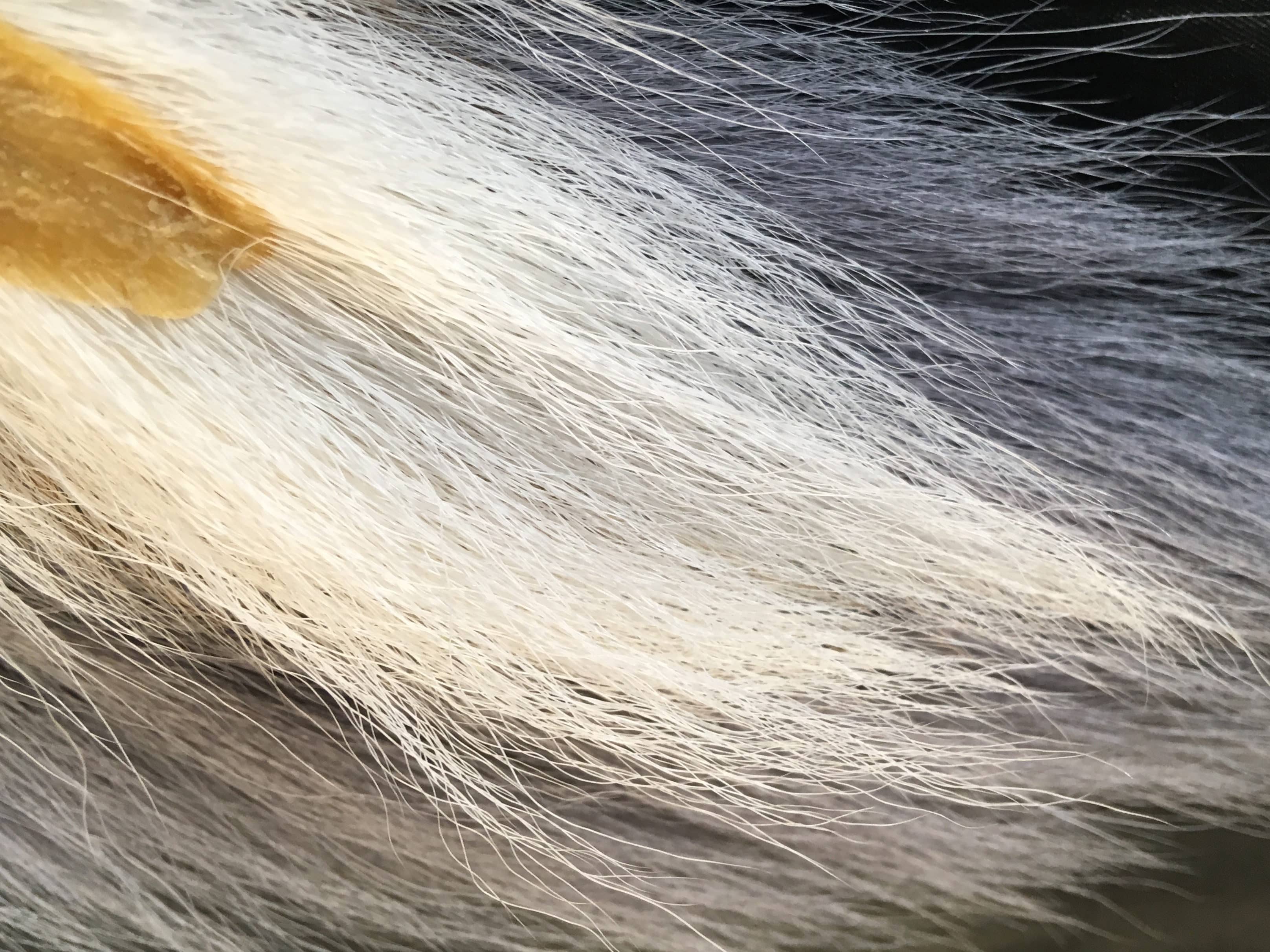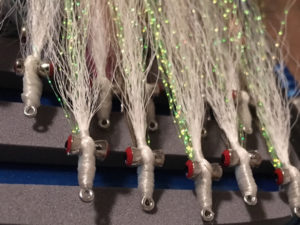
Bucktails of good quality from a harvested deer can be preserved and left in their natural hues or dyed to provide color to patterns. Simonson Photo.
By Nick Simonson
When it comes to trophies following a successful hunt, most people’s minds turn to the antlers on the buck they just shot, or the tenderloins in the doe they just tagged; but there’s one part of a whitetail deer that stands out to those hunters who also create their own lures in the winter season that follows the hunt.
The tail of a whitetail deer is one of the most ubiquitous sources of material for those looking to craft jigs for springtime smallmouth bass, in-line spinners for pike and muskies, and a wide variety of streamers for crappies, white bass and trout, and usually such a prize is present in a variety of colors in a lure making bench of fly tying desk, likely purchased from a store or online. However, tying these patterns and others with a bucktail from the deer you’ve harvested yourself adds to the reward of a good hunt and connects your most recent excursion with those you’ll take next spring and summer.
Quality Inspection
A good bucktail will be clean and dry, so if you plan on saving one from a deer you’ve tagged, make sure to inspect it before removing it from the animal during the field dressing process, and do it before you get down to gutting.
Make sure that the hairs are in good shape around the tail and it has both ample white and natural coloring. Check to see that there is not significant blood, feces, urine, mud or other contaminants on or in the hairs which may decrease its usability. Check also to see if the hair is in good shape, as deer can lose hair due to parasites, infections or other maladies. Also inspect the tail for burs or other natural materials which might render it unusable. If there are only minor accumulations of contaminants and no loss of hair, do what you can to wipe the tail clean before severing it from the body at its base with a sharp knife or small bone saw.
When you return home, debone the tail and skin it out. Then place it in a small Ziploc bag and put it in the freezer to kill any ticks and mites and to better preserve the tail for use at the bench. Some Borax or salt on any flesh at the base will help dry it up during the curing process which takes a couple of weeks in the cold conditions. After that, you can use the tail as-is for great white and natural haired patterns or consider dyeing it with a number of commercial methods for the colors you want to tie your lures and flies in.
Many Uses
Bucktail hairs provide subtle motion in the water and are easily shaped with just a bit of thread tension. A harder pull when locking them into place on a jig, treble, or streamer hook will cause them to flare out, and they can be stacked clump over clump to provide added bulk without added weight.
For jigs, keep them sparse and slightly flared to offer the most action in the water. Bucktail jigs provide a reliable go-to for smallmouth bass in spring when water temperatures are cold and a subtle presentation is required. Add a few strands of krystal flash for contrast and your homemade offering is sure to get snapped up.
Long before the in-line spinner market was dominated by Double Cowgirls and half-pound assemblies of #12 blades and mag flash skirts, bucktail spinners were the ticket to fast pike fishing and the occasional muskie. With a handful of 3/0 to 6/0 hooks, you can craft a reliable bucktail treble by layering the shaft with multiple bunches of hair from your harvest. White is a great color and comes naturally with the tail, and when set over a trio of red hackles creates that never-fail dynamic duo that members of the Esox genus just can’t resist.

Finally, from flies such as Clouser minnows to black-nosed dace to shrimp patterns like the crazy Charlie, bucktail is a vital ingredient in streamers the work on trout in mountain streams, white bass and crappies in midwestern lakes, and saltwater species like redfish and speckled trout. Providing both profile and pulsation, the hollow hairs move with a strip through the water and help give that impression of a fleeing baitfish, crayfish or something else edible underwater. Whatever you angle for and however you do it, there’s room for bucktail patterns tied from the tail of a deer you just harvested.
Take care to consider this third trophy aspect when you put your tag on a whitetail this yearband tie the autumn adventure to those expeditions to come next spring and summer.
